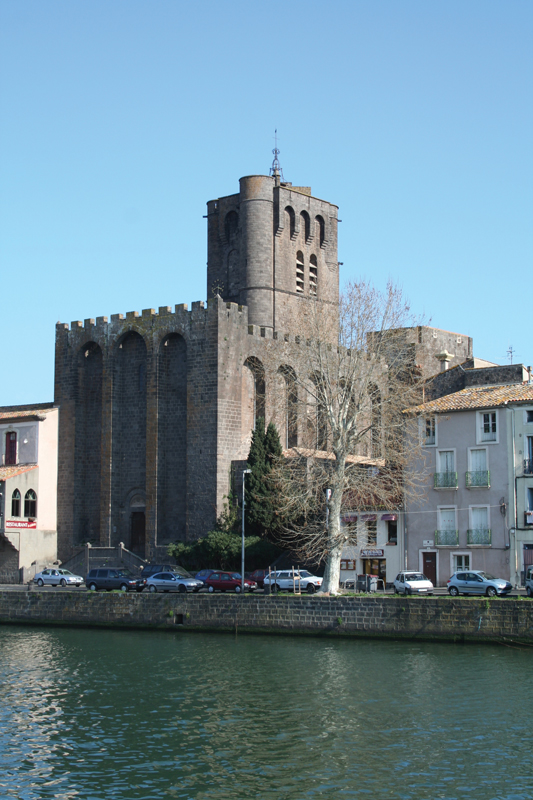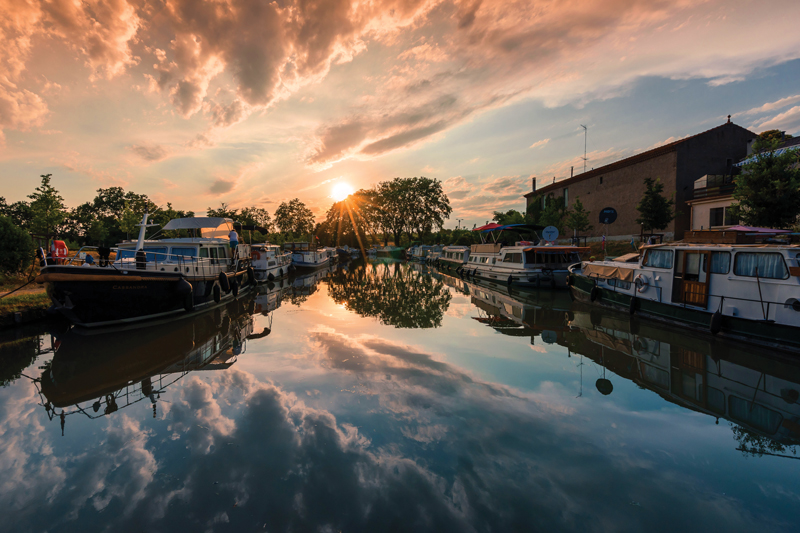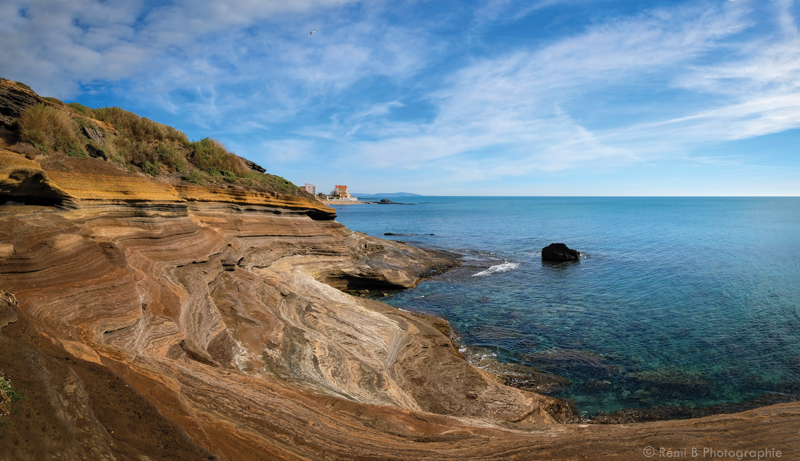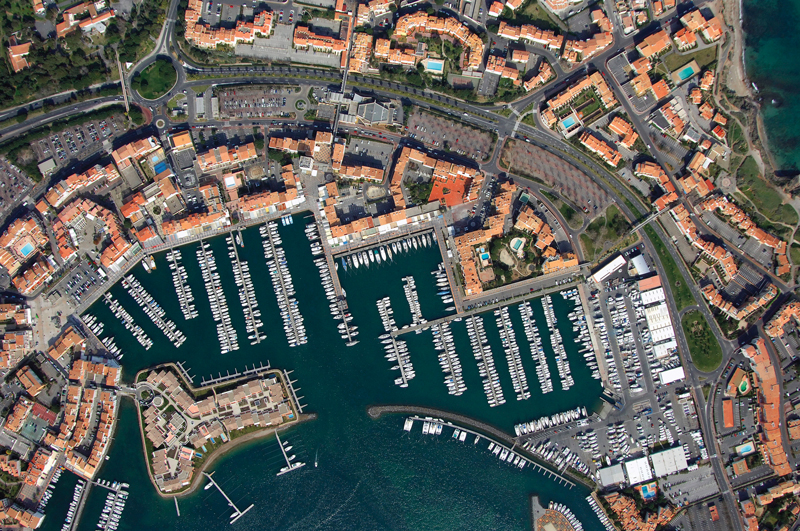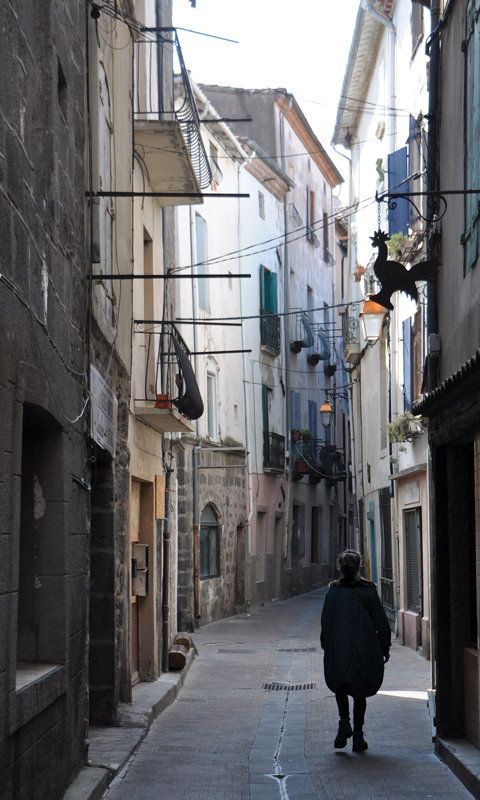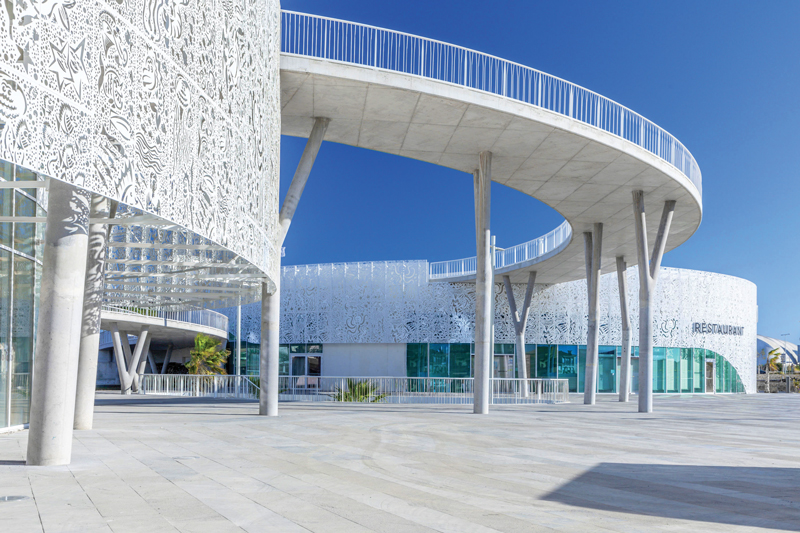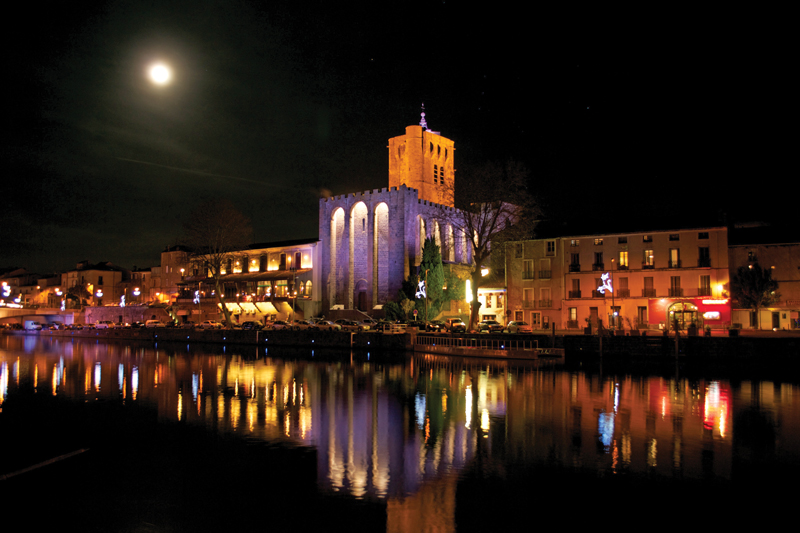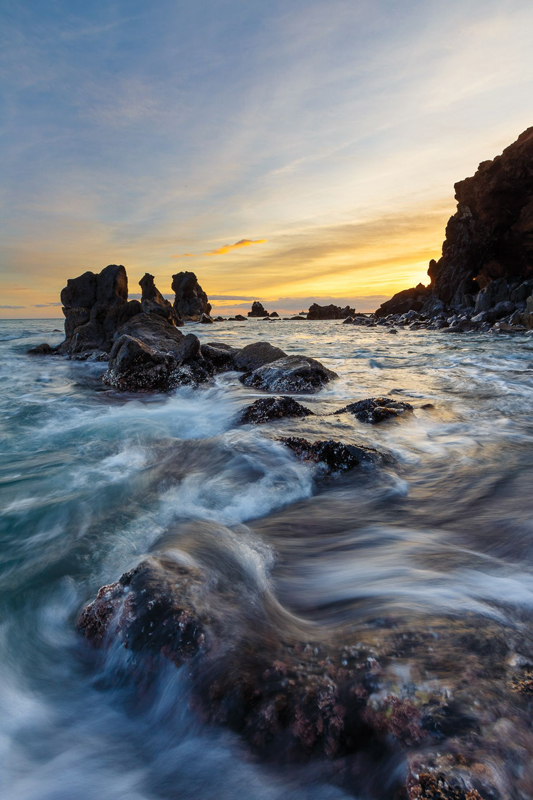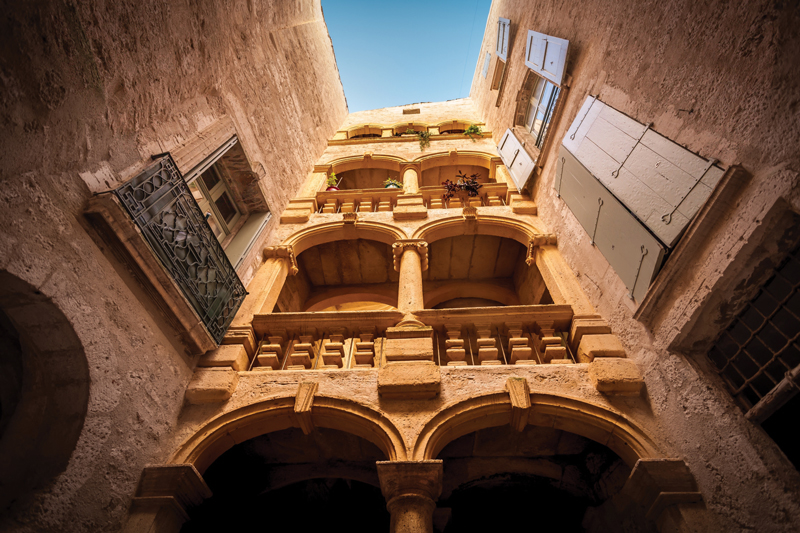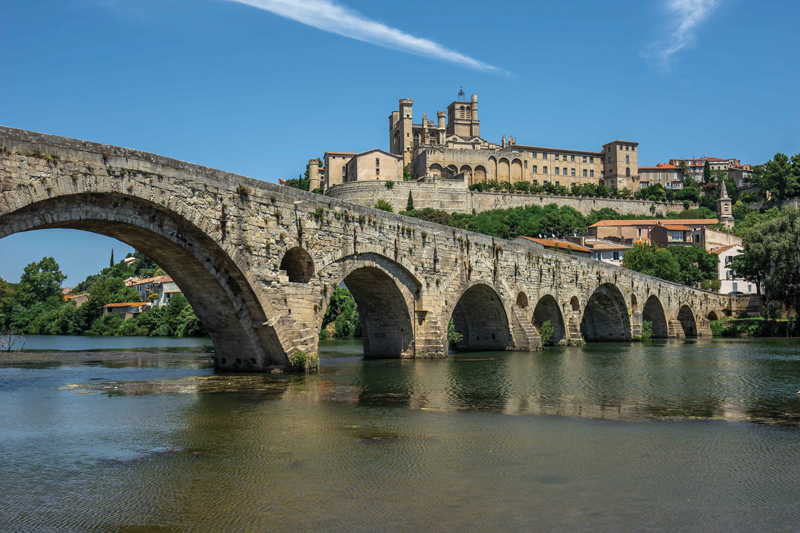Un lieu de bonne fortune
It’s a petite ville of Greek origin, the town was populated in the 5th. century BC. by the focenses, Greeks from Asia Minor who baptized the city with the name of Agathé Tyché "Good Fortune" and the name brought him good luck because as a result of maritime trade the city prospered economically. It is one of the oldest cities in France and captivating by the maze of narrow streets and the dark color of its buildings, walking through the alleys you can discover an ancient herit-age out of the ordinary. Until the first third of the 20th. century, Agde was one of the most im-portant commercial ports in the northwest of the Mediterranean: Agde, Cap d'Agde, Grau d'Agde and the Tamarissière, all gathered by the River L'Herault and the Mediterranean Sea. The women of the city wear the sarret and Belle Agathoise costume on the occasion of the main tra-ditional.
The Romanesque cathedral of Saint-Etienne is reflected in the waters of the Hérault river. It is surely one of the most beautiful examples of the fortified churches in the region, it was built in 872 and fortified in 1173. The cathedral has all the attributes of a medieval fortress, it has a 35 meters tower made of black basalt, the volcanic stone of Mount Saint-Loup, which accentuates the side of the imposition of its fortifications. It is classified as a historical monument since 1840, the side gate of the river dates from 1898 and can be accessed inside by the chapel of Nôtre Dame de Lourdes.
The Marina Place is recognized for being full of maritime traditions of the city and its important past port activities, still subsist for fishing and shipbuilding. The majestic port houses that line the square remember the privileged links they have always maintained with the sea. Basalt docks along the Hérault river were built in the 17th. century and lead to the nearby sea. The statue of Amphitrite, name of the goddess of the sea, symbolizes the maritime vocation of the city; It is located in the center of the square, was offered to the city of Agde in 1936, was originally parisian and adorned the Trocadero.
"The Agathois Jules Baudou Museum" is the heart of the historic center, has the Musée de France quality certificate since 2002 and invites us to discover the life of the maritime river city of Agde. It was founded in 1935, its collection presents the arts and traditions of Agathé, daughter of the Mediterranean. The Museum is directed towards the daily life of the agathois in the modern period, an incredible journey that allows you to discover folklore, as well as the maritime and wine activities of the city and their territory. In the museum, many paintings and wax figures present headdresses, lace, cashmere, dresses and accessories, through reconstructions of everyday life in the 19th. and 20th. centuries.
The nautical fair - joutes nautiques:
Proof of the importance of the Hérault river in the town is a celebration from the nautical fair, typical of Occitania´s localities. These traditional festivals take place in several towns of Languedoc-Roussillon. Agde, a city founded 26 centuries ago by Greek sailors from Phocea, along with Marseille is one of the oldest in France; it is the historical cradle of the just of Languedoc and has an unquestionable privilege: that of the former, because on May 31, 1601 on the occasion of the Pentecost fest and the arrival of the Duke of Montmorency; Henry I, Commander of France, held a sumptuous fair tournament in Agde. The consuls of the time naturally chose the most noble and popular local's traditions to greet the governor general of the province of Languedoc and his protector.
The Hérault has seen centuries of nautical battles. The fair ones remember the tournaments of knights of the Middle Ages. Participants also receive the nickname "Knights of the tintaine"; The tintaine is the name of the raised platform at the back of your ship, an unstable place in itself and where the opponent has only one desire, to expel the other without contemplations. This collision sport is a duel between two types each armed with a shield known as le pavois, a spear called l’épure and combative intentions.
The objective of the participants is not to fall into the water. In the front of the boats, occupied by about 10 rowers, the helmsman, the rider, the musicians (an oboe and a drum) play the traditional melody of the competition. This form of combat so characteristic represents a kind of battle between newly married men against young men, divided into "red boat" and "blue boat". Before each tournament, the participants parade from the Town Hall to the channel, to the beat of the music.
The contestants, dressed in white and with bare feet, face in the water; in one hand the shield and in the other a wooden lance 2.80 m. long, made of solid wood and without knots, painted red and white to allow a good evaluation of its good behavior. The practice and the required qualities are those of the marine skillful: the balance, the look, the way of placing oneself. It is also necessary to have cunning, not to mention the vice of those who "release" the spear in the hand, which "delays the shoulder" or "opens", unhooking the bulwark to leave only the vacuum to the opposite. In this first stage, the less experienced player is already "in the air", if he stood firm on his legs, he must now exert pressure on the upper body, the movement that pushes the two boats. This sport is ruthless: each round is eliminatory, the best is the one that in the end remains dry to contemplate, from above, its last adversary who, according to the saying, "will taste the bitter sensation". The bitterness of sea salt that rises to the Hérault river along with the taste of defeat.
Cap d'Agde
It is a destination in which to enjoy art, underwater heritage, nautical events and the festive and lively atmosphere are its main attractions. It overlooks the Mediterranean just where the river l'Hérault and the Canal du Midi intersect, which is why it hides its best treasures underwater so it is recommended to explore the seabed, whether it is an aquatic submergence, on the edge of the beach or visiting the museum of l'Éphèbe.
L’Éphèbe museum is the only one in France dedicated to an impressive collection of underwater archeology, in this area many remains have been found due to its strategic position in the Gulf of Lyon and the Hérault. Since Greek times, maritime exchanges were constant and due to shipwrecks and disasters some archaeological objects were preserved in the waters of the Mediterranean and the Hérault. In the museum we can observe canyons of the Royal Navy and loads of sunken ships between the 17th. and 19th. centuries; basalt anchors and amphorae of ancient navigation; and the regional collection with outstanding works such as the statue of the Ephebe, a bronze masterpiece of Greek sculpture, is 2.300 years old and is believed to represent Alexander the Great, was discovered in 1964 at the foot of the cathedral, in the Hérault river, found by the team of the Underwater Archaeological and Diving Archeological Research Group. You can also see other unusual works of which there are only a few copies in the world, Greco-Roman amphora, mosaics of the first century, Etruscan objects, etc.
On the Mediterranean borders, recognized Cap d'Agde Nautical Autumn Show, with high quality facilities and Pavillon Blue port, in this way by the ecological label that guarantees water quality, they host one of the most important nautical activities in Languedoc-Roussillon responding to the most demanding spectators, they are 20 years old and attend from October 30th. to November 3rd., 2019 with more than 200 exhibitors in which they can find motor and sail boats, high-tech equipment, sports, Naval Associations and services to discover the ants arriving at the Paris Motor Show.
La Grande Conque is the only black sand beach in France: more than 750.000 years ago, the volcanic activity was intense in this ara. It is a volcanic beach with grayish black sand and stones, it’s horseshoe shaped volcanic beach with grayish black sand and stones, it’s enclosed between the sea and the high volcanic cliffs with varied tones.
The Bagnas Nature Reserve is a protected maritime zone, there is a quality plan for the protection of beaches, green areas, water cleaning and the banks of Cap d'Agde. In Bagnas there are 560 hectares of marshes and lagoons where 250 species of protected birds live: storks, ducks, cranes, flamencos, herons, birds of prey and other migratory birds.
Fort Brescou, is the fort inspired by Vauban military building, it is located on a 740,000 years old island, formed by the flow of volcanic lava. In 1586 Viscount Guillermo de Joyeuse took advantage of the island to build the first fort, large enough to house 60 men and serve as a base for two frigates that controlled the sea. From the 18th. century Brescou is part of the Pioch and Castellas towers, a place of surveillance against english invasions. Cardinal Richelieu was interested in connecting him to the city through a dike that was never completed as the cardinal died during the works. Remained isolated and served from the 18th. century until the middle of the 19th. century as a state prison. From 1998 the island was a privileged site for diving and underwater fishing. As of 2005, the fort is closed to restore it through the association of the "Friends of Brescou". The Brescou island houses two lighthouses located in the fort, the first dating back to the end of the 16th. century, it is a simple tower of black stones, a lantern at the top of which was content to light a fire. It is still visible today on the walls, facing the sea. The second lighthouse was built in 1836 on the remains of the great tower, pointed the rocks at the navigators. The tower has a height of 12 meters, white at the bottom and red at the top, rises 22 meters above the water and has a maximum range of 13 nautical miles. Formerly it was inhabited by a caregiver responsible for its maintenance until 1989, it is currently automated and has no protection.
Grau d’Adge
It is a charming fishing village with important commercial activity; full of color in which tradition and nature shines.
You have to visit the chapel of l'agenouiller, or also known as Nôtre Dame de la Genouillade, it is of great sobriety, its ceiling is adorned with a “lantern of the dead”. built in basaltic stone in 1653 at the initiative of Henri I de Montmorency, governor of Languedoc. According to tradition, it is so called because in the 5th. century there were strong floods and knelt on a stone to pray and from there it stands out as a place of pilgrimage. The church of Nôtre Dame du Grau was built in 1584 is a sanctuary dedicated to the virgin on the route of the Camino de Santiago.
The Marine Natura 2000 Site is a marine protected area in Europe, covering 6.152 hectares, from Port Ambonne to Grau d'Agde. Important natural resources such as posidonia meadows and coral reefs be home to around Brescou Island; the Mediterranean rocky bottoms of the Grande Conque, Rochelongue, and the sandy habitats extend along the beaches. We can also find some dolphins occasionally.
La Tamarissière
It is on the other side of the river's l'Hérault, it is a quiet place to spend a holiday in contact with nature because the town is between a bicentennial pine forest, the port and the beach. The best thing to do is to walk under the great pine trees along the coast, in addition to bathing in the fresh waters of the river or in the salt of the beach. The Commandant Réveille pier, from the 18th. century was recently improved, green spaces have been created, street furniture has been established, lights have been installed to improve public lighting and a mixed walk along the Hérault is accessible for pedestrians and bicycles, this together with the mooring rings protected monuments.
Agde and the nearby
In the proximities of Agde we can find Béziers, the 2nd. largest protected sector in France after Paris, shows its wine heritage and Haussman facades. Everything has Roman influence: the amphitheater, the bullring, the cathedral and Les Allées Paul Riquet, is the place of the Biterrois promenade;
the medieval towns and the Albigensian crusade are in every corner.
Pézenas, a small city of remarkable medieval and classical architecture, is the capital and place of residence of the governors of Languedoc from 1526 to 1632 and from 1660 to 1666. It should also be noted that bats have a Nature 2000 protection zone in this city.
Sète is a city of high maritime importance, it is a commercial and sports port, channels with colorful facades, crossed by drawbridges and revolving bridges. The pointe courte is an authentic fishing district, and in the quartier haut a classic italian atmosphere is perceived. We can continue through this region and find unusual cities.
Text: Mónica Sánchez Miguel ± Photo: marsellein / WPD / Le Grau d'Agde / reddit / Marina / AlvaroLaforet / remi b ohotograpie / AdobeStock / Herman Verheij / Languedoc-Roussillon your / locator



